Can I Have Iced Coffee After Tooth Extraction? A Complete Guide for Coffee Lovers
Coffee is a daily comfort for many, but after a dental procedure like a tooth extraction, the rules about eating and drinking change.
If you’ve been wondering, can I have iced coffee after tooth extraction?, you’re not alone.
At Bazan Coffee, we’re passionate about helping you enjoy your coffee smartly and safely–even during recovery.
In this guide, we’ll give you a clear, science-backed answer to protect both your healing and your coffee ritual.
Why Aftercare Is Crucial After Tooth Extraction
Tooth extractions are surgical procedures, and aftercare is vital for:
-
Protecting the blood clot that forms at the extraction site
-
Preventing infections
-
Avoiding painful complications like dry socket
Dietary choices–including your coffee habits–directly impact your recovery timeline.
According to the American Dental Association (ADA):
"Patients should avoid hot foods and beverages, hard chewing, and suction-related activities immediately after tooth extraction to allow proper healing."
But what about cold coffee?

Can I Have Iced Coffee After Tooth Extraction? Quick Answer: Yes–with Care
Yes, you can have iced coffee after a tooth extraction–but timing and technique are important.
Here’s the general guidance:
-
Avoid any coffee (hot or cold) for the first 24 hours after the procedure.
-
After 24 hours, you may cautiously enjoy iced coffee, provided you don’t use a straw and sip gently.
Why the caution? Because certain actions–not the temperature–pose the biggest risks.
Key Risks When Drinking Iced Coffee After Tooth Extraction
1. Risk of Dry Socket
Suction (such as sucking through a straw) can dislodge the protective blood clot.
This can cause:
-
Severe pain
-
Delayed healing
-
Additional dental treatments
SCA’s 2023 Beverage Safety Research notes:
"Suction forces, rather than beverage temperature, are primary culprits in disrupting post-extraction healing sites."
Thus: no straws for at least 5–7 days after the extraction–even for cold drinks.
2. Sensitivity to Temperature
-
Right after extraction, your mouth may be more sensitive to extremes of heat or cold.
-
Iced coffee could temporarily cause discomfort or mild pain near the surgical area.
If you experience sensitivity:
-
Opt for cool or room-temperature beverages instead of very cold ones for a few days.
3. Additives and Sugars
High-sugar coffee drinks (frappuccinos, flavored lattes) can:
-
Increase bacterial activity in the mouth
-
Raise infection risk near the extraction site
Stick to plain iced black coffee or coffee with minimal additives during early recovery.

Best Practices for Drinking Iced Coffee After Tooth Extraction
|
Goal |
Strategy |
Bazan Recommendation |
|
Protect blood clot |
Sip gently, no straw |
Drink from a cup |
|
Avoid pain |
Choose cool, not ice-cold drinks |
Slightly chilled iced coffee |
|
Minimize bacteria |
Limit sugary syrups and flavors |
Enjoy pure, clean brews |
|
Promote healing |
Stay hydrated alongside coffee |
Alternate with plain water |
How to Enjoy Iced Coffee Safely Post-Extraction
1. Wait at Least 24 Hours
Give your body time to stabilize clot formation and initial healing.
2. Drink Slowly and Gently
-
No slurping.
-
No strong suction forces.
-
Let the coffee flow naturally into your mouth without force.
3. Choose Smooth, Low-Acid Coffees
Low-acid, specialty-grade coffee:
-
Reduces the risk of irritating sensitive tissues
-
Is gentler on the mouth’s healing environment
World Coffee Research’s 2022 Beverage pH Study shows:
"Low-acid coffees promote better tolerance during post-surgical recovery periods compared to highly acidic brews."
Bazan’s Cau Dat Arabica Cold Brew is an excellent, smooth option during healing.
FAQs: Iced Coffee and Tooth Extractions – Your Biggest Questions Answered
Can I drink regular hot coffee after extraction?
Not immediately.
-
Avoid hot beverages for the first 24–48 hours, as heat can increase bleeding and slow clotting.
How soon after extraction can I use a straw again?
Dentists generally recommend waiting 5–7 days after extraction before using a straw to avoid dry socket risk.
Is cold brew better than traditional iced coffee after extraction?
Yes.
-
Cold brew is naturally smoother, lower in acidity, and easier on sensitive mouths.
-
Traditional iced coffee may have higher acidity, depending on brew method.
Should I brush my teeth after drinking iced coffee during recovery?
Yes–but gently.
-
Use a soft-bristled toothbrush.
-
Avoid brushing directly on the extraction site for the first few days.
Why Bazan Coffee Supports Safer Recovery Enjoyment
At Bazan Coffee, we carefully roast and process our beans to ensure:
-
Low acidity, protecting sensitive mouths
-
Smooth, rich flavor, even when cold brewed
-
Pure, specialty-grade quality, free from harsh chemicals or contaminants
Our Cau Dat Arabica, Special Vietnam Blend, and Fine Robusta – Krong Năng deliver exceptional flavor without risking your healing.
Whether you’re easing back into coffee with a cool, refreshing sip–or savoring your return to full-strength brews–Bazan Coffee is crafted to support you every step.
Can I Have Iced Coffee After Tooth Extraction? Yes–If You Follow Smart Guidelines
So, can I have iced coffee after tooth extraction?
Yes–with timing, gentleness, and smart choices.
Remember:
-
No coffee (hot or cold) for 24 hours post-surgery.
-
No straws for at least 5–7 days.
-
Choose smooth, low-acid, specialty coffee like Bazan’s for maximum comfort and healing.
Your healing journey deserves the same care and quality as your coffee rituals.
At Bazan Coffee, we help you brew smarter, sip safer, and smile brighter–every day.
Heal Gently. Sip Smarter. Choose Bazan Coffee.
Explore Bazan’s recovery-friendly, flavor-rich brews:
-
Cau Dat Arabica - Silky cold brew perfection for sensitive days.
-
Special Vietnam Blend - Balanced, smooth strength as you heal.
-
Fine Robusta - Krong Năng - Boldness for when you’re ready to power back fully.
Trust your cup. Trust your recovery. Brew with Bazan Coffee.




